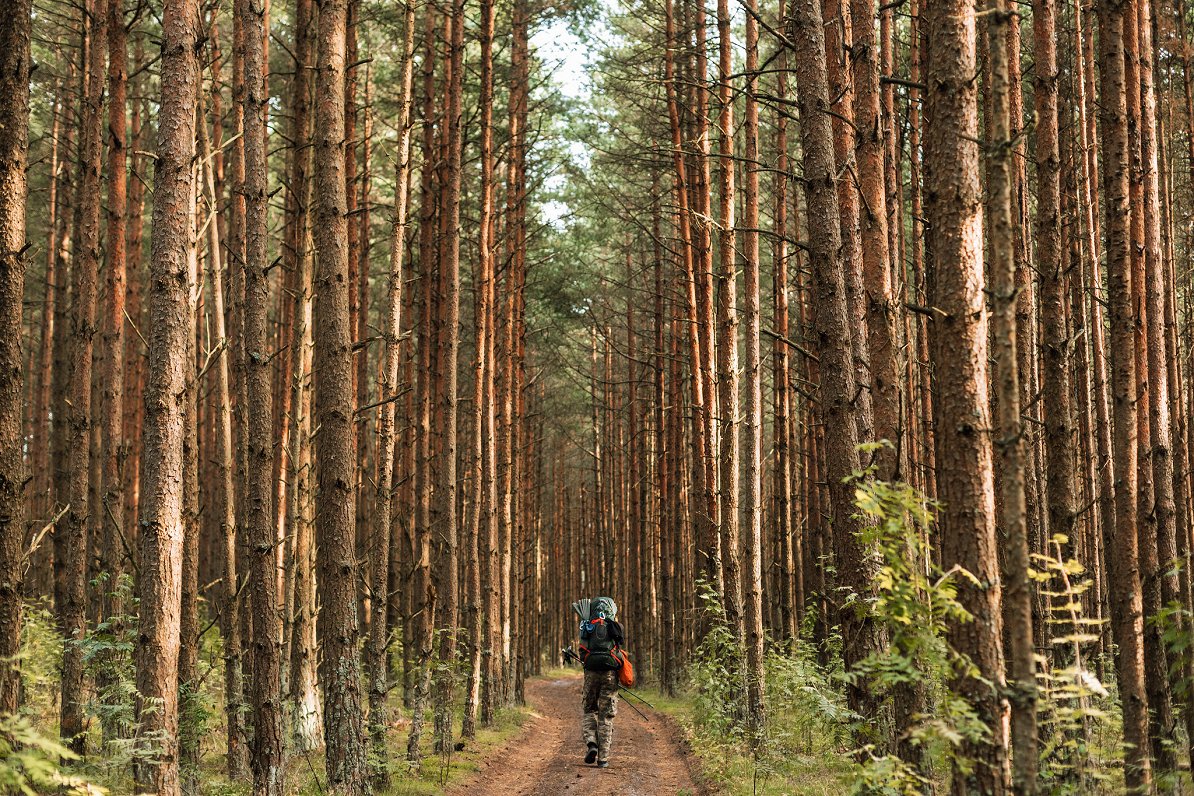Today, hikers in Latvia have the choice of several marked long-distance hiking routes – Jūrtaka (Baltic Coastal Hiking Route), Mežtaka (Forest Trail), Camino Latvia, and Ezertaka (Lake Trail), but this is quite a recent development with the Jūrtaka project kicked off in 2017. There are also several Greenways, long distance paths along former rail lines that can be used by hikers and cyclists.
Local hiking enthusiasts gather in Facebook groups like Pārgājieni / Pastaigas (Hikes / Walks), which was founded in 2016 and now has 37,000 members who share impressions of their own adventures, seek hiking companions, and advertise organized hikes there. LSM set out to explore what sparked these developments, where they have led to until now and what the future may hold for Latvia’s budding hiking culture.
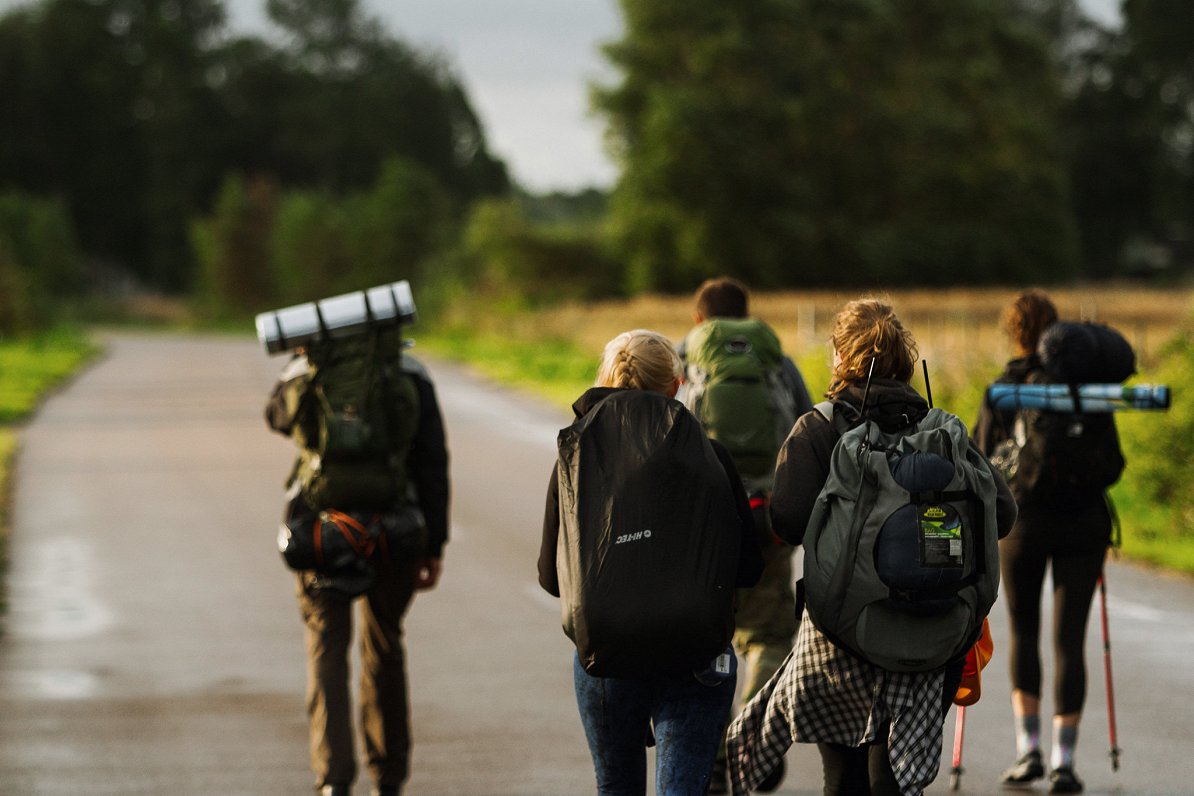
Juris Smaļinskis is a biologist by education, and an expert in tourism and the environment by profession, working for the rural tourism association Baltic Country Holidays. He is one of the team members behind the Jūrtaka and Mežtaka routes.
It was 2017, when Baltic Country Holidays, and partners from Latvia and Estonia submitted a project proposal to the Interreg Europe Estonia-Latvia programme funded by the European Regional Development Fund with the aim of establishing the Jūrtaka. Why did they feel it was the right time?
“It’s like the natural evolution of species – when certain external, economic, political, social and historical factors align or are achieved, a product is born,” says Smaļinskis. “I think many people have had similar ideas, but we were the ones to succeed in defining and packaging, as well as marketing it, which is important. There are interesting products that people just don’t know about. But, if you make something, and people don’t find out about it, then it doesn’t mean much.”
Smaļinskis speaks of several reasons that led to developing the first long-distance hiking route. “Travelers would often write to us asking where they could hike in Latvia. We wondered “What do you mean, where? Come and hike wherever!” But they meant known, marked hiking routes. For travelers from Germany, for example, it’s very important for routes to be marked,” he shares.
While Latvia had no shortage of nature trails, it did not have marked routes for one-day or multiple day hikes.
“If you look at the trails set up before 2017, many are very local. Only rarely do they cross administrative borders. Often, they’re not logical in the sense that you start at point A and finish at point B but then what do you do after reaching point B? You either have to go back or call for someone to pick you up because public transport isn’t always available. Such nature trails typically come with a car park, so the trail is more like a sightseeing attraction,” Smaļinskis explains.
“Of those, most are short – a few kilometers long. Like the super popular swamp trails in Ķemeri and Cena, which get very busy. For fast walkers, those three to five kilometers take an hour. If you nature watch or take photos, it may take a bit longer. But few trails reached or exceeded 10 kilometers. However, I’m not saying that such trails are a bad thing,” Smaļinskis continues.
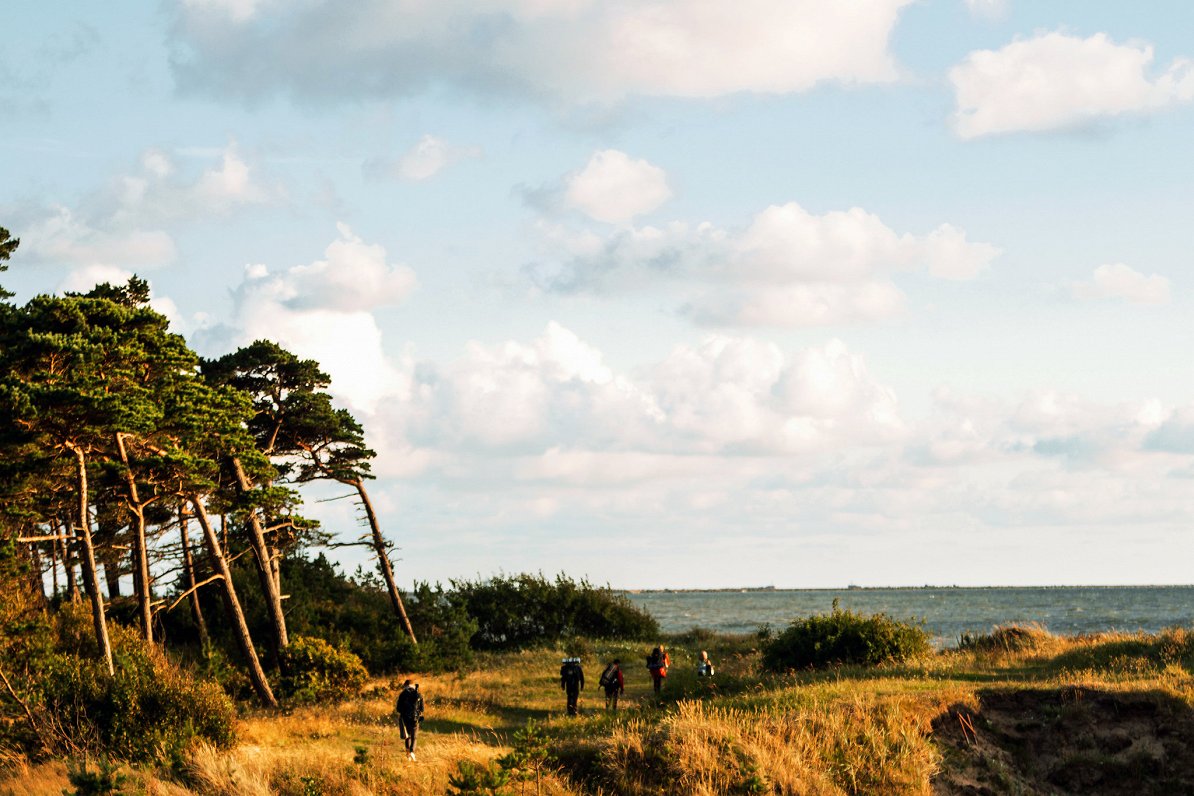
So, can’t hikers just roam freely wherever their noses take them if they seek something longer or
more challenging?
“It’s one thing to go on an independent hike, which means taking responsibility for yourself and communicating with the people you meet along the way, including landowners. However, if we want and encourage others to go – especially people from other countries – and do it as an organization, we can’t just say “just walk from Liepāja to Zilupe, it’ll be great!”” says Smaļinskis.
The first step is researching the route and testing it out, but this also involves coordinating with landowners, some of which will not allow crossing their land. “The coast belongs to us – the state – but we might also be crossing state-designated protected areas. We’ll also be passing through state owned forests, but that doesn’t me we don’t have to coordinate with Latvia’s State Forests, the organization. We involve the local tourism information centers, regional tourism associations, and planning regions. There are many players,” says Smaļinskis.
Matijs Babris, founder of the hiking and adventure company Movement Spontaneous and chairman of the board of the Latvian Nature Tourism Association echoes the importance of such planning and coordination.
“It’s one thing to go alone but another if you want to get people moving,” Babris says.
Eight years ago, he founded Movement Spontaneous because he and his partner wanted to go on group hikes but went orienteering instead because they couldn’t find any organized hikes. Eventually, they began organizing their own.
Babris credits Baltais kalns, one of the first group hiking events in Latvia, as one of the initiators of the now-active hiking community in Latvia. The event sees people hike along the coast between Kolka and Dubulti in a set amount of time for an element of competition.
“Imagine if you organize a paid event like that and suddenly something forces you to change or cancel it,” Babris says of the need for management and coordination. With time, Babris and fellow hike organizers identified a vast gray area regarding the legal side of spending time in the outdoors.
“What constitutes a paid event, what is and isn’t private property, and a towpath? What about sleeping in the outdoors? If this is allowed, does it apply to sleeping on a mat without a tent? How many hours count as sleeping and at what time of day?” Babris shares just some of the questions that came up.
“We didn’t feel like the public had the capacity to act. It seemed like it was all determined by politics or the interests of specific organizations like the Nature Conservation Agency whose intentions weren’t all bad! The goals were largely noble. Still, it felt like we were up against a system. Everyone is saying “be active, go into the wild” but where? In the end, the only place you can venture to freely is a small restriction-free plot of land in the middle of Vidzeme,” Babris continues.
So, for two years, several hike and other outdoor event organizers met unofficially, sharing their pain points. “One would complain about the fine they had received, another about a different fine, and a third had gone bankrupt. We talked and talked until we founded an association with the primary goal of bringing nature tourism organizations together to keep each other informed and get the legal side of things tidied up,” Babris speaks of the road to founding the Latvian Nature Tourism Association in 2020.
“Our dream is a joint European law on nature that would allow people to access nature, understanding where they can and can’t go. This information would appear on Google Maps and similar platforms. Currently, for people to understand where they can and can’t go in Latvia calls for logging onto the Ozols nature data system! Imagine what that’s like for a foreigner. But this problem isn’t unique to us,” says Babris.
One of the association’s founding goals is to develop and promote responsible nature tourism in
Latvia. Does the commodification of hikes and hiking routes not interfere with sustainability goals, driving more people into the outdoors?
“Animals, birds, and plants need to be protected but we’re living creatures too. We should be able to take care of our health too,” explains Babris on the need to balance the interests of people and planet.
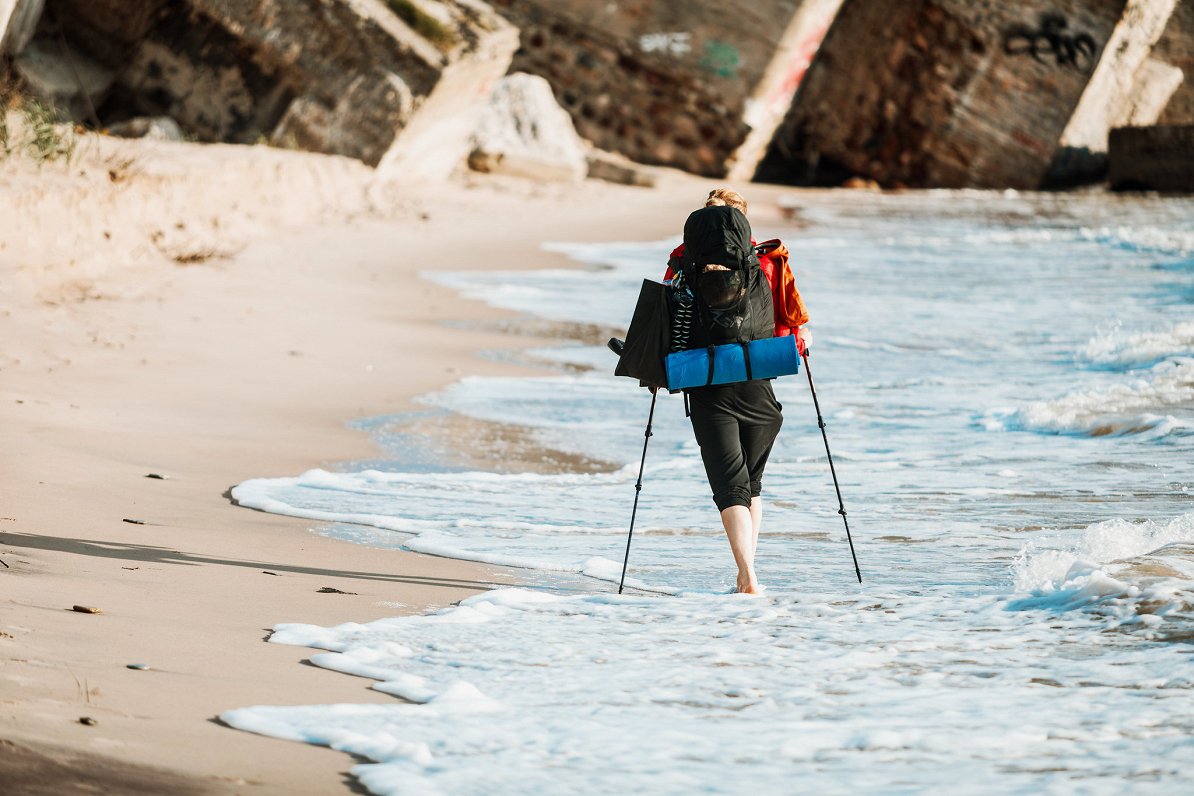
Smaļinskis advises looking at the numbers: “There aren’t that many of us, and there aren’t that many foreign arrivals for it to become a problem if we split ourselves across those thousands of kilometers.”
The Mežtaka is 2141 kilometers long, the Jūrtaka is 1419 kilometers long, and the joint population of Latvia, Lithuania, and Estonia is just over six million. Both routes cross all three Baltic states.
“If we were to gather the entire population along the Mežtaka and Jūrtaka, the trails wouldn’t be brimming,” he says. Besides “a person that goes on hikes is a decent human being,” he adds, describing how hikers are actually likely to be the ones to pick up other people’s rubbish even though every kilogram matters when you have to carry it in a backpack.
Smaļinskis says that rubbish is more likely to be left behind by people traveling by car and having a picnic in the outdoors, for example. As he points out, day trippers and serious hikers are completely different target audiences “Of course, one might hike a shorter trail from time to time and vice versa,” he clarifies.
So, while new hiking routes and related products are facilitating access to nature, they are being designed with care towards our shared resources.
“Overtourism becomes a problem if people run to the same few viewing towers in summer. At the same time, there are places where nobody goes. To get that balance is the challenge,” says Babris.
He believes that one of the keys lies in creativity and marketing. “There is, for example, a lot to do in Jūrmala in winter too if you think about how to sell it,” Babris notes. For this reason, the Latvian Nature Tourism Association is working to educate its members on how to make their products more appealing and comprehensive.
“A product means you have a set amount of time, a description, and an experience you’re selling. Perhaps it’s not a “hike” but “visiting the cormorants” or “the hunt for lake fortresses”. It needs to connect things to make them more interesting.
“Businesses that offer rental boats to take down the river Gauja work but at one point you reach market saturation. To copy that business model isn’t difficult but consumers want something more interesting. Often, this is food. Food and nature are a good match because you get hungry after being active,” Babris explains.
Combining different activities and the services of several businesses also allows for better economic returns since complex products rely on local resources, such as caterers and accommodation providers.
Valdis Čeičs is a tour guide and owner of Baltic Nature Travel, a tour operator. He sells one-day hikes on online marketplaces like Viator where his bestsellers are the tours to well-known and widely marketed places like the Ķemeri and Gauja National Parks. “I’ve tried selling less conventional routes like a hike along the Garezeri lakes, but no one has bought it yet even though the price is much lower,” he says.
“During the pandemic, I offered hikes to expats like Erasmus students via Facebook. We covered a lot of different routes because they hadn’t just come to Latvia for a few days and so weren’t just interested in seeing the top of the top places,” Čeičs outlines the different target audiences that exist and the need to segment them.
The next steps for the Jūrtaka and Mežtaka revolve around this kind of segmentation not just from a marketing point of view but also product development. Baltic Country Holidays keeps receiving interest from people who want to visit the routes but have specific needs.
“Two weeks ago, we had a visitor from a seniors club in Canada who told us that they, the members, don’t like being in hot places for too long, need shade and shorter one-day routes. People are very different, so we want to mark and adapt certain sections, for example, by installing ramps for people with reduced mobility. Of course, we don’t have the capacity to install these along the entire route,” says Smaļinskis.
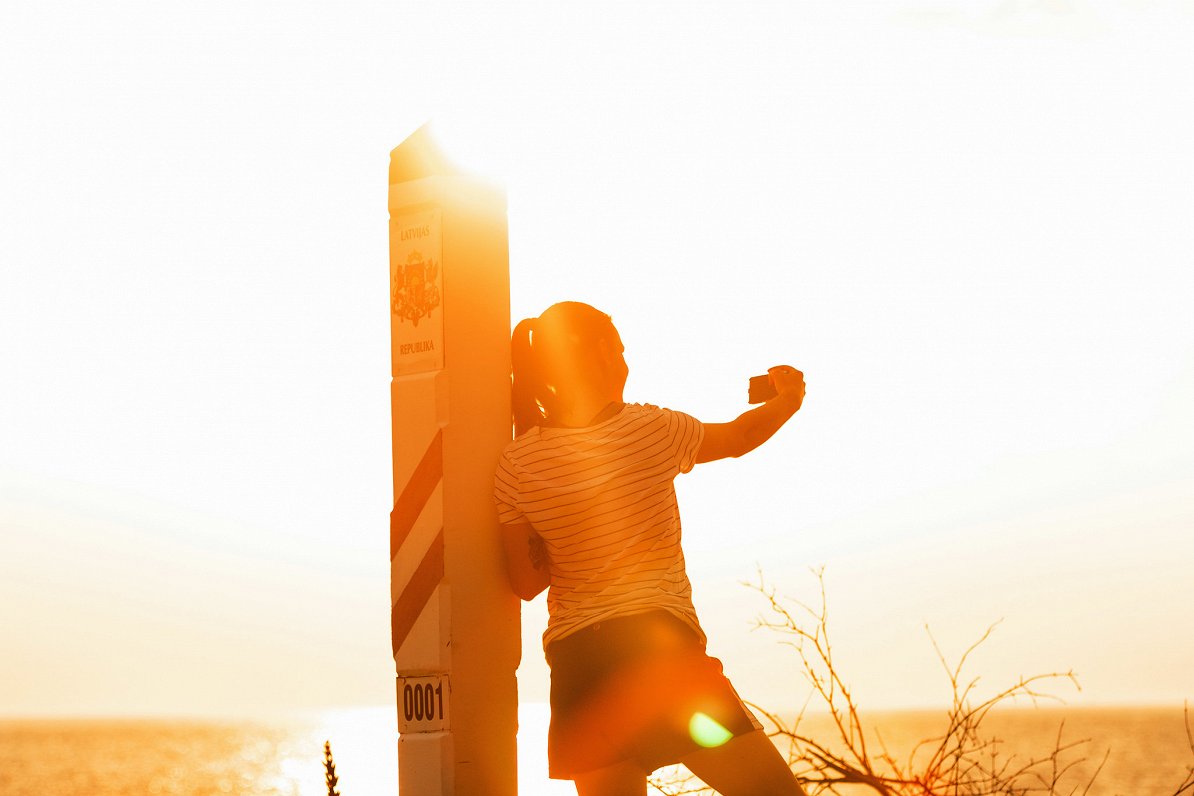
Baltic Country Holidays has also received emails from people wanting to hike with their dogs or ride horses along the Mežtaka, and one man wanting to ride a unicycle. The plan is to tailor the routes to different interest groups, for example, families with children who may not be able to cover 25 kilometers in one day. For them, the sections could be shortened.
According to Smaļinskis, this is not common practice but could be a competitive advantage for Latvia. “If we look at any European mountain system, it’s difficult for us to compete. We’re on a plain. However, this also brings more opportunities because mountain routes are almost impossible to adapt unless you build lifts. Flat areas are physically more accessible,” he says.
Clearly, people want and need access to nature. While some are happy with the occasional day trip, others need a deeper immersion. To satisfy the variety of interests calls for dialog, holistic cooperation, and coordinated action.
Babris speaks of how this balance is being established around the world: “Nature itself is not made for the masses that are tourism, so the global trend is to create “new” nature in areas like old ports that lack a quality natural environment. It’s about establishing artificial parks for the masses while keeping authentic places less busy.”
“Ideally, we should be able to attract people rather than force them to such places. Iceland’s Blue Lagoon resort and spa [man-made hot springs next to a geothermal power plant] is a cool example. Most people go there while smaller groups travel further with a guide.
“Philosophically speaking, you should have nature on your doorstep. The less people travel, the more problems are resolved,” Babris adds.
For Līga Veitnere, an educator and former hiking group leader, it was precisely the fact of having nature on her doorstep that eliminated the need for longer expeditions into the wild. Having moved from the city to the countryside, she no longer feels the need to “escape the city”, so she hikes much less than before.
“When I do go, it’s usually when I’ve been invited by a city-dwelling friend or relative. I go for the change of scenery, to clear my head, spend time with people and to see the nature in other parts of Latvia. We choose where to go based on friends’ recommendations and where we haven’t been before in the specific season. I prefer places with fewer people. Sometimes, I’ll just go where my nose takes me and check Google Maps for sites and attractions. That way I often find spots that are just as beautiful as the popular ones,” she says.
While Latvia may not be a “hiker’s paradise” just yet, with so many organizations working to improve the situation, it is progressing fast. Now may be a wonderful time to enjoy it and contribute to its further development.
Suggested hikes for the weekend
Mežtaka
The Mežtaka introduces hikers to the diversity of landscapes in Latvia, Lithuania, and Estonia, leading through its national parks and other largely forested areas with certain sections being more urban. It is split into one-to-two-day sections.
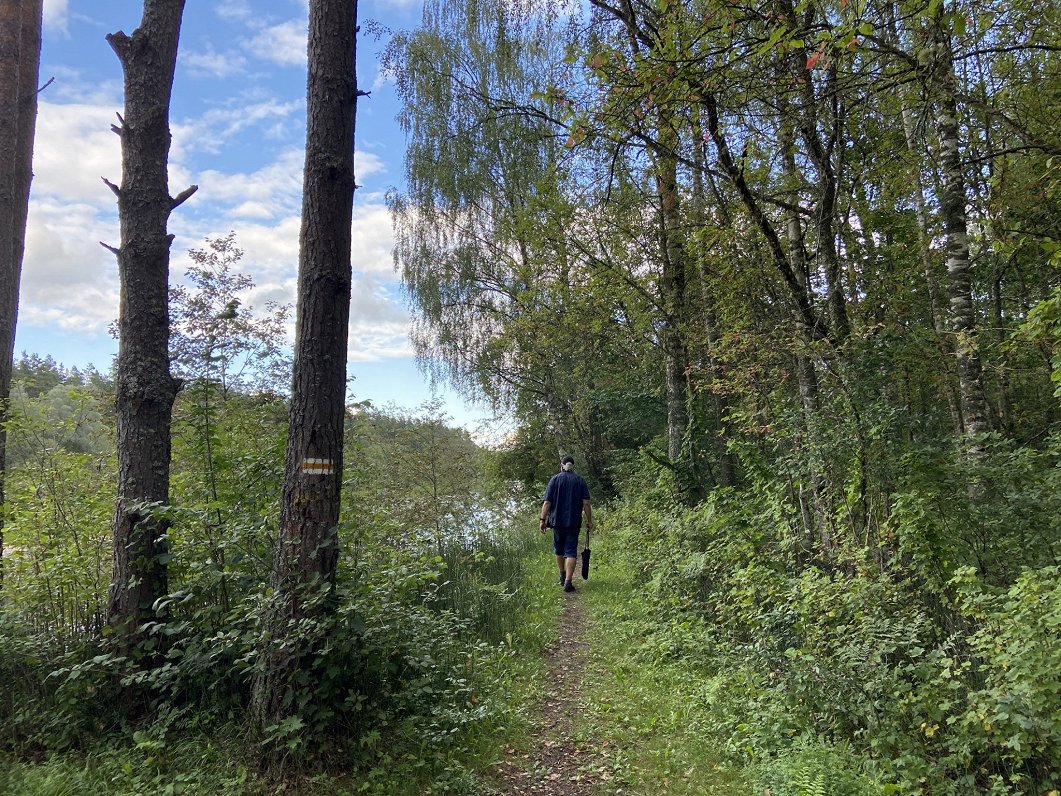
“You have to understand that the route leads through three countries, so you won’t get constant wow moments, untouched nature and deep forests all the way through. There are wonderfully interesting sections and boring parts because we cannot combine the interesting bits in any other way. You may have to walk along the road but we always advise of that, and you can choose to hop on public transport or arrange for your accommodation provider to pick you up in those cases,” says Juris Smaļinskis, one of the people behind the route.
The “Hiker friendly” sign issued in Latvia by Baltic Country Holidays designates businesses along the way that can cater to the specific needs of hikers, such as drying facilities for shoes and clothing, water refill points, and wifi access.
Garezeri
Accessible by train from Riga, this hike starts near Lilaste railway station, taking hikers along three lakes – Ziemeļu Garezers, Vidus Garezers, and Dienvidu Garezers. The terrain is varied but not overly challenging. You can either do a loop around the lakes or walk to the next station: Gauja.
“There’s this place referred to as “Shamanistan” there by the coast, which delivers that all important “wow” moment, which is difficult to get from today’s traveler,” says Valdis Čeičs, a tour guide who organizes hikes.
